Perfectly Preserved: About Pompeii
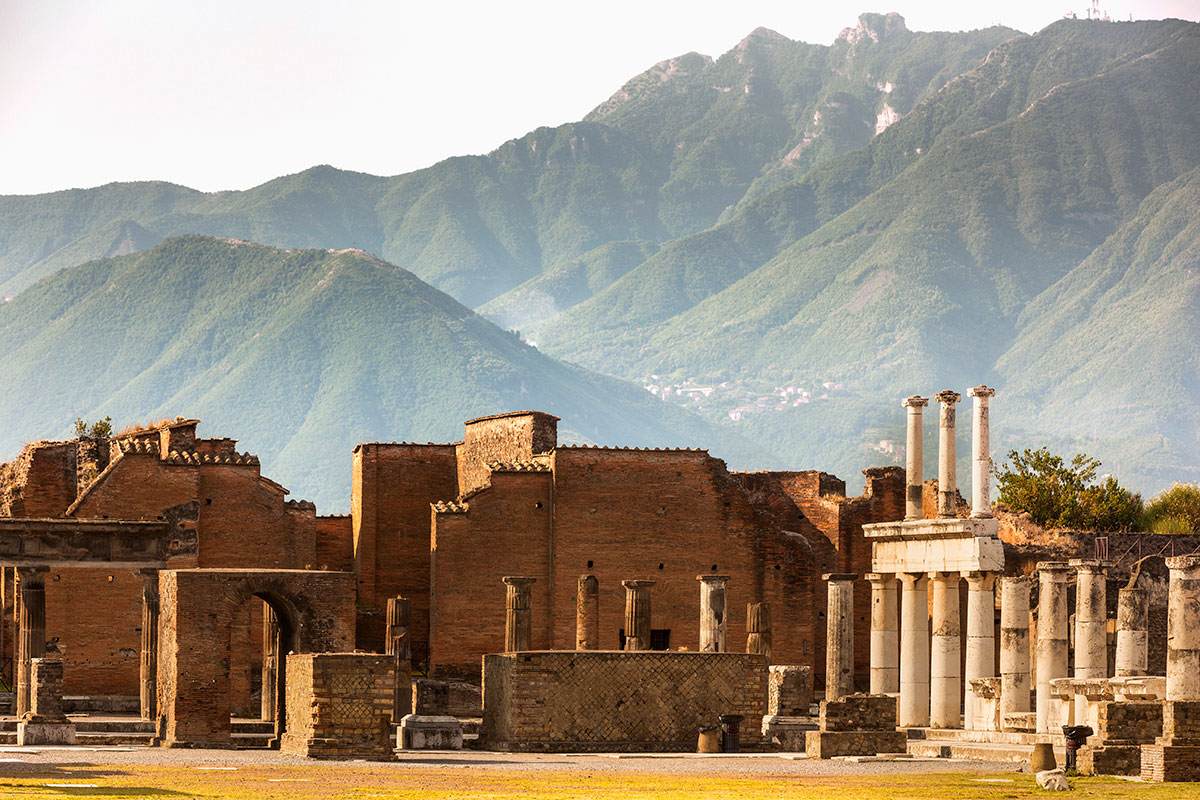
Once a thriving and sophisticated Roman city, Pompeii was buried under several metres of volcanic ash in 79AD
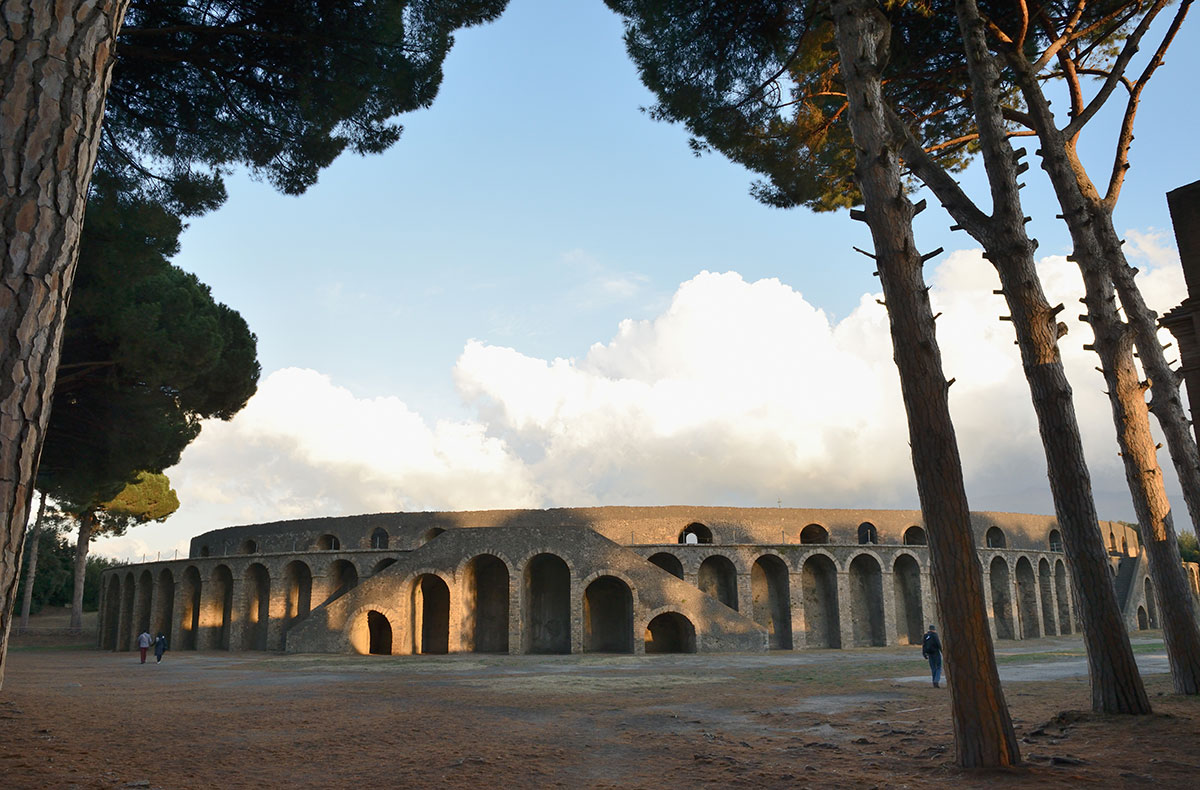
Pompeii’s amphitheatre, site of the infamous riots of 59AD
About Pompeii: History
The loaf was one of 81 buried under the ashes spewed out by Mount Vesuvius. Celer would never have known that his bread or his name would have endured so long. Not even the city itself could have had such expectations. Indeed, most inhabitants of Rome might never have heard of Pompeii, some 225km from the Imperial capital, had it not been for a riot in the amphitheatre that broke out between spectators in 59AD. As a result, the Emperor Nero prohibited such spectacles in Pompeii’s amphitheatre for a whole decade.
Pompeii’s international fame rests on a very different event — the most devastating natural disaster in the history of Europe when in 79AD, the spectacular eruption of Vesuvius transformed the city of 15,000 inhabitants into one of the world’s most famous archaeological sites.
The former seaport was brought to light from beneath a 5m-thick shroud of ash, yet its origins are not known with any certainty. The popular view is that the name Pompeii is derived from the word pumpe, or “five” in the ancient local dialect — a reference to the number of villages that merged to form the city, which was first inhabited around 700BC.
About Pompeii: Geographics
Just over two-thirds of Pompeii’s total area (66 hectares) has been excavated and a stroll through its streets presents the image of a prosperous city of luxurious villas, striking mosaics and splendid wall paintings in blue, black, ochre and vermilion — all indicators of a well-to-do society. Who can fail to be impressed by the mosaic that welcomes visitors to the House of the Tragic Poet, with its fierce canine guard and the inscription “Beware of the dog”? But these images do not fully reflect the extent of the city’s wealth because warning tremors from the volcano had caused many inhabitants to flee the region, taking their valuables with them.
Pompeians were accustomed to dealing with the wrath of Enceladus (the giant in Greek mythology who was believed to be the cause of earthquakes and volcanic eruptions). Indeed, the city had not yet fully recovered from the powerful earthquake of 62AD that had caused extensive damage — many buildings were still being repaired when Mount Vesuvius erupted 17 years later.
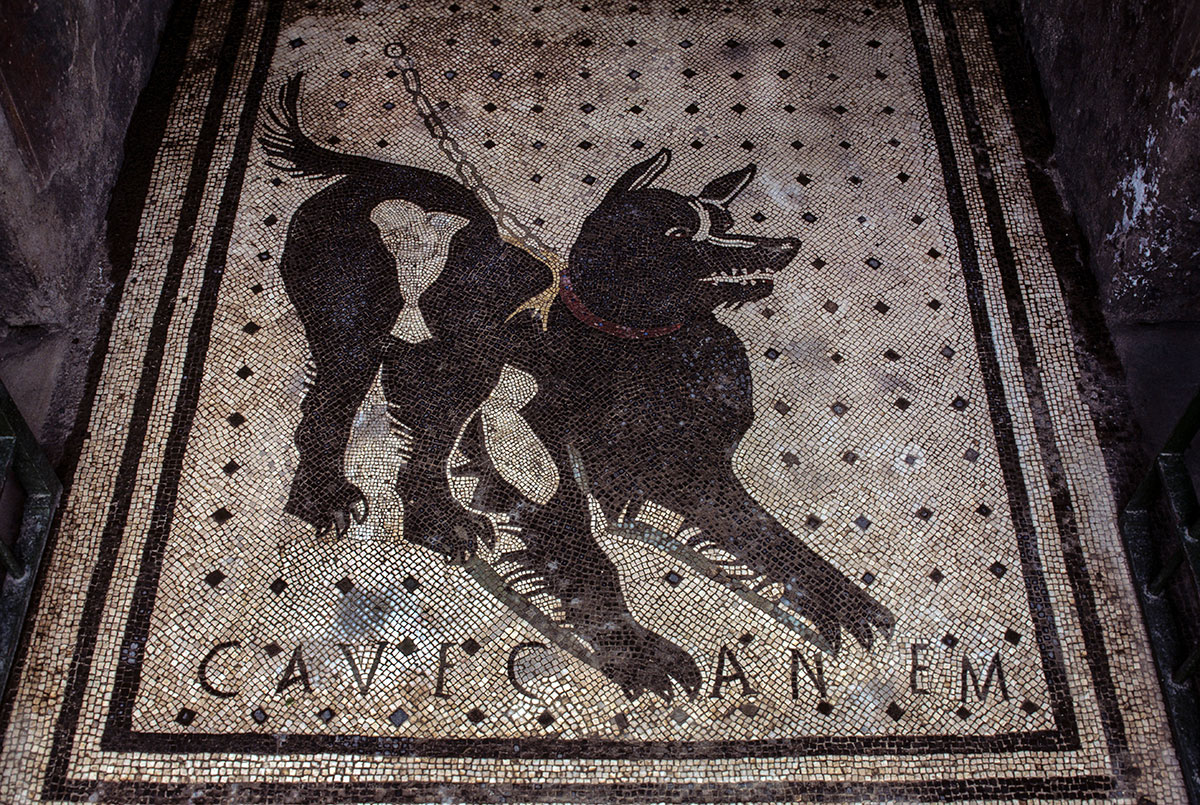
A beautifully preserved mosaic at the House of the Tragic Poet
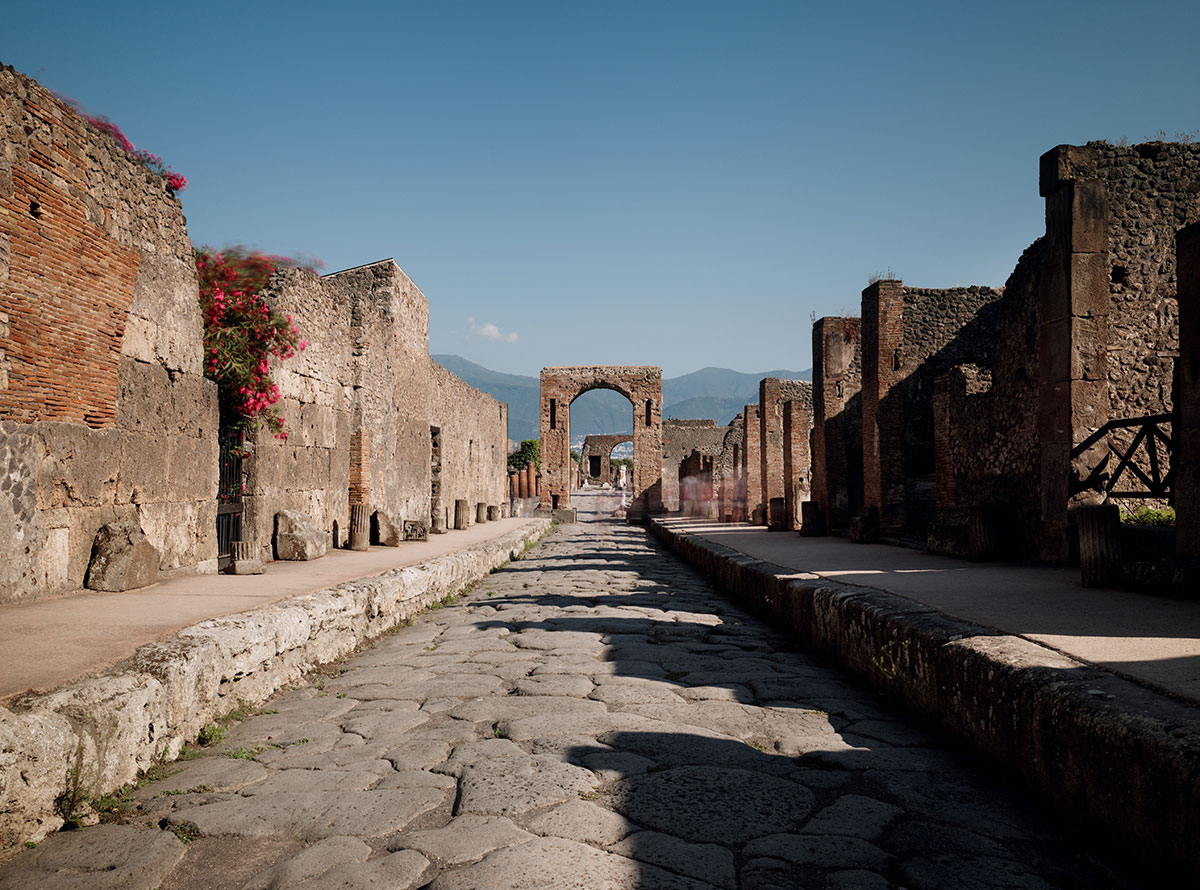
The Via de Mercurio runs down to an archway built in honour of the Emperor Caligula
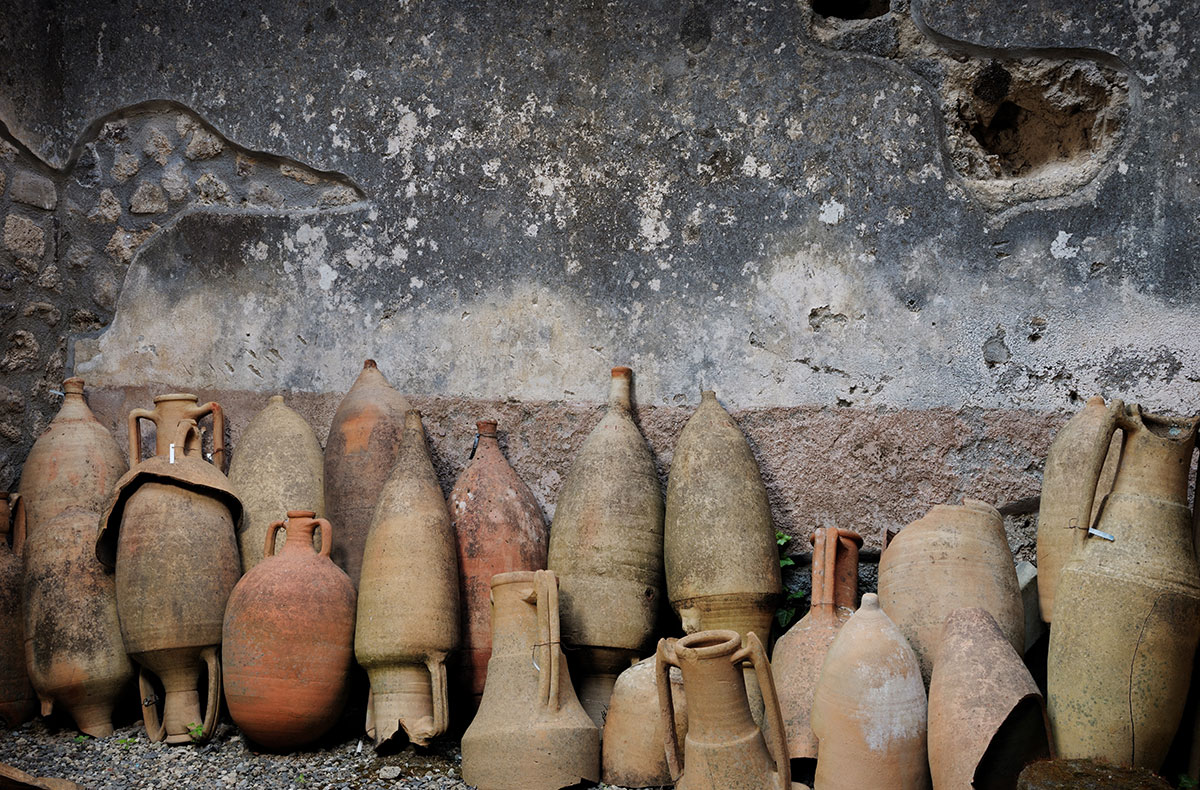
Amphorae in the House of Menander
About Pompeii: Diet
The luxurious homes testify to the presence of well-to-do families, but the analysis of 139 skeletons (from a total of 1,150 people who perished), shows that one-third of the population suffered from anaemia and samples from all social classes reveal traces of lead poisoning, possibly due to its use in preserving wine. Scientists claim, however, that the Pompeiians’ low-sugar, high-fibre diet that included lots of fresh fish kept them in better health than today’s Neapolitans.
About Pompeii: Left Behind
Rich or poor, both those who escaped and those who were killed by the eruption have become known to us today solely through what they left behind. And although their voices cannot be heard, their words remain in the extensive graffiti left on the city walls. Some archaeologists have even compared the walls of Pompeii to the pages of Facebook, for among the “postings” we find literary passages and greetings to friends, as well as political writings. Their subjects are familiar to modern eyes: a message on one wall urges the reader to “Vote for Gaius Julius Polybius for public office”.
But, the inhabitants of Pompeii were apparently not content with words alone. Depicted on a wall painting in Pompeii’s public baths is a trio of lovers — two men and a woman. And in the garden of a banker’s home is a mural of a couple devoting themselves unashamedly to loving embraces, indifferent to the presence of the slave, or any other observers. Sex was not regarded as something shameful that had to be hidden and there were brothels in Pompeii.
There were many women of social status and wealth, such as the priestess Eumachia who financed the erection of one of the largest buildings in Pompeii from which a marble statue has been preserved.
Other findings continue to surprise: for example, a monkey was identified in the ruins, but not a single cat has been found. Pompeii is not, as many believe, the perfect time capsule. After the volcano erupted, fires broke out, ceilings collapsed and columns fell. Sheets, blankets and clothing were destroyed. In the centuries that followed, Pompeii was frequently the victim of explorers who removed valuable objects. Even the first excavations in the 18th century resembled little more than a hunt for buried treasure and objects regarded as unimportant were often destroyed.
Pompeii Preserved
The image of a city frozen in time was created by its dead who were not killed by lava, as many believe, but by falling stones, collapsing buildings or by the super-heated air of the pyroclastic surge. Their death throes, which were preserved as a hollow of hardened ash left after their bodies had disintegrated, were recorded by Giuseppe Fiorelli, director of the Pompeii excavations in the mid-19th century, who poured plaster of Paris into these hollows, creating casts.
Although Vesuvius dealt the city a mortal blow while simultaneously according it with immortality, the years since the excavations began in 1748 have perhaps been harder. The elements have seriously damaged many of the monuments and visitors, too, have taken their toll. Over the centuries, souvenir-hunters have removed roof tiles, shards of pottery, and even bits of wall. Attitudes towards archaeology and the repatriation of antiquities have changed dramatically in the modern age. Even so, a myth had arisen, claiming that artefacts taken from beneath the ash would bring the perpetrator bad luck. As a result, dozens of packages and envelopes containing treasures large and small are returned to Pompeii every year, back to a city that became famous only when it was resurrected from the ashes of its “executioner”, Mount Vesuvius.
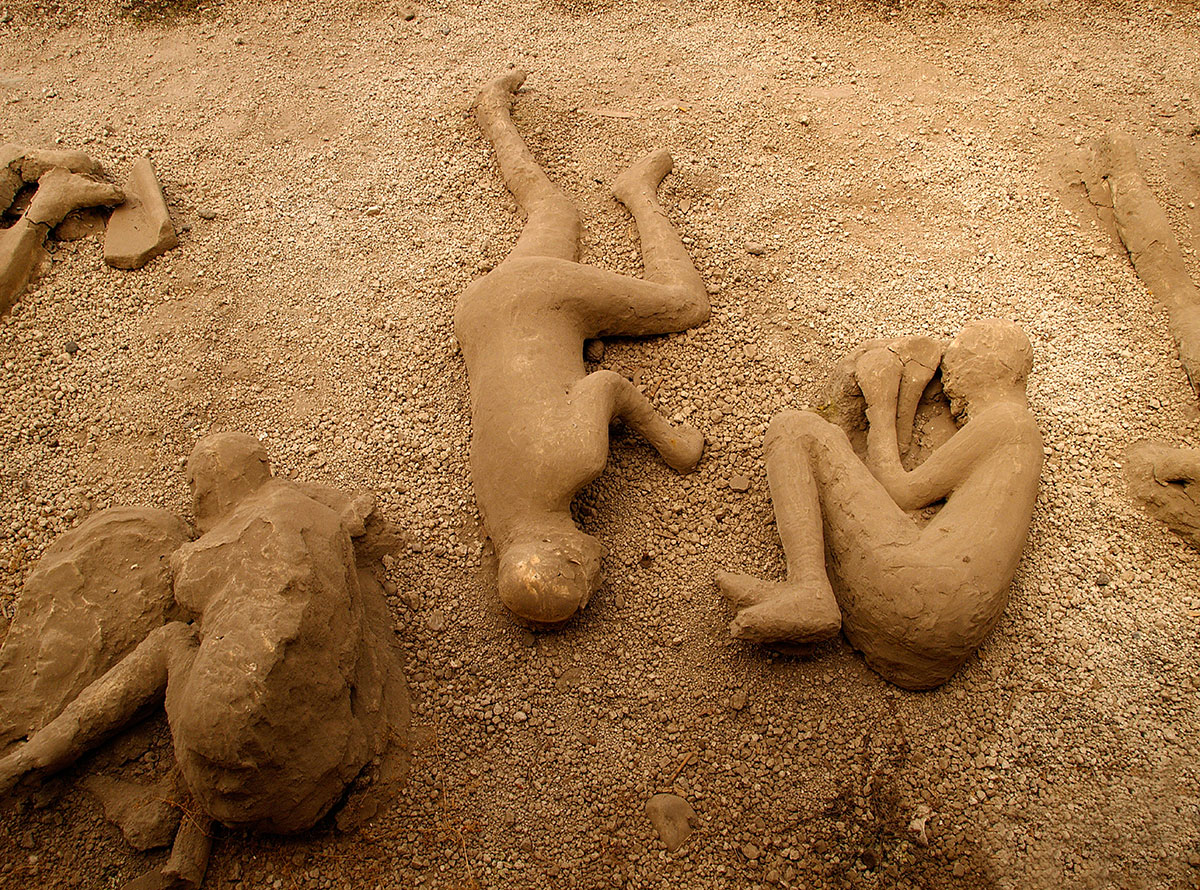
plaster casts of victims killed by the toxic fumes;
Discover more destinations to visit or contact us to plan your bespoke itinerary today.


 Go back
Go back